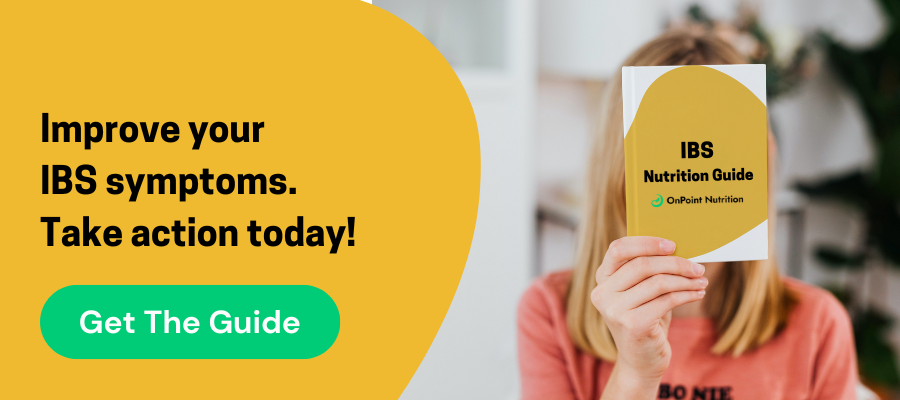
Many people with IBS identify pain as one of their worst symptoms. However, pain location and severity often differ from person to person. IBS pain originates in your internal organs but is not caused by any structural abnormalities. This means that the pain people experience with IBS (although very real) does not appear on imaging tests. So where does IBS pain come from?
Cause of IBS Pain
People with IBS may have “visceral hypersensitivity” . This means that the pain receptors in the intestines react more severely to normal stimulants. For example, normal gas or stool levels in the gut can cause a person with IBS to experience abnormally high amounts of pain. Over time, continuous pain results in a phenomenon called “sensitization”, wherein the brain enters a state of heightened awareness that causes every small sensation to feel excessively painful. Therefore, people with IBS often experience chronic, long-term pain.
Characteristics of IBS Pain
Pain can be consistent or it can come and go by hours, days, or weeks. Typically, people with untreated IBS experience pain at least a few times per week. As your body becomes more and more irritated by food and stress triggers, your level of pain may increase. This pain is caused by inflammation build-up in the gut. Each person perceives pain differently, and thus describes their pain in different ways. We list common pain descriptors below:
- Sharp
- Stabbing
- Aching
- Painful Spasms
- Abdominal Tenderness
- Tightness
- Uncomfortable
IBS pain location can also differ from person to person, depending on which part of their digestive system is the most sensitive. People with IBS often have overly sensitive guts; the pain they feel in their gut is much more intense than the average person. Certain portions of the digestive system may be more sensitive than others. Therefore, some people with IBS will more commonly feel pain in their stomach, while others may feel pain in their intestines. The most common locations of IBS pain are listed below:
- Upper-abdominal pain
- This pain is typically associated with stomach bloating and can become worse after meals
- Often described as a sharp, stabbing pain
- Mid-abdominal pain
- This pain occurs around the midsection, near the bellybutton
- Often described as achy, spasmic pain
- Lower-abdominal pain
- This pain typically occurs in the lower left or right quadrant and is often relieved by defecation
- This is often described as cramping, aching pain
Triggers of IBS Pain
Triggers of IBS symptoms are not necessarily the same as triggers of IBS pain. While some triggers overlap, there are very specific behaviors that can trigger pain receptors in the gut.
- Irregular eating habits
- Waiting too long to eat after waking up, skipping meals, and eating too quickly are all irregular eating habits that can stimulate IBS pain receptors. People with IBS tend to experience less pain when they eat smaller, more frequent meals. It is also beneficial to eat slowly in a relaxed environment.
- Emotional stress
- The brain and gut are so interconnected that mental stress can trigger the pain receptors in your gut. Developing stress management techniques is crucial to managing IBS pain.
- Food triggers
- Overly spicy or fatty foods can trigger IBS pain by overstimulating the gut. Too much of these foods can also stimulate gastrointestinal motility, which can cause painful bowel movements.
Pain Management
Now that you know where the pain is coming from, you may be wondering how to alleviate it. Well, the first step to reducing IBS pain is to identify what triggers the pain response in your gut. The best way to do this is by symptom tracking. Symptom tracking involves keeping a log of your food, eating habits, and IBS symptoms to identify what may be causing your IBS pain. Once you’ve identified your triggers you can work on modifying them.
Sometimes triggers are very cut and dry, which makes it simple to identify and treat the root of the problem.
Unfortunately, people commonly have multiple triggers... which can make it difficult to determine the specific source of your IBS pain. If symptom tracking is not working or if you feel like you need more help, we recommend working with a dietitian. Dietitians know what to look for when identifying triggers and can help you work through strategies to more easily pinpoint the root problem.
What to do Next
The bottom line is that IBS pain, although normal for this condition, can be debilitating. The good news is that your pain does not have to be permanent. If you are experiencing pain associated with your IBS, the only way to fix it for good is to identify and eliminate the triggers. Do your research, know what to look for, and don’t be afraid to ask for help when you need it!
To read more about foods to avoid, foods to eat, and how to make easy changes to your IBS diet to mitigate your symptoms, download our IBS Nutrition Guide.


Topics

Kaitlyn Willwerth is a Registered Dietitian at OnPoint Nutrition. Kaitlyn's work focuses on providing individualized health and lifestyle coaching and, most importantly, support. She is a Certified LEAP Therapist and has also completed the Monash University 'Low FODMAP Diet for IBS' online training course for health professionals.


